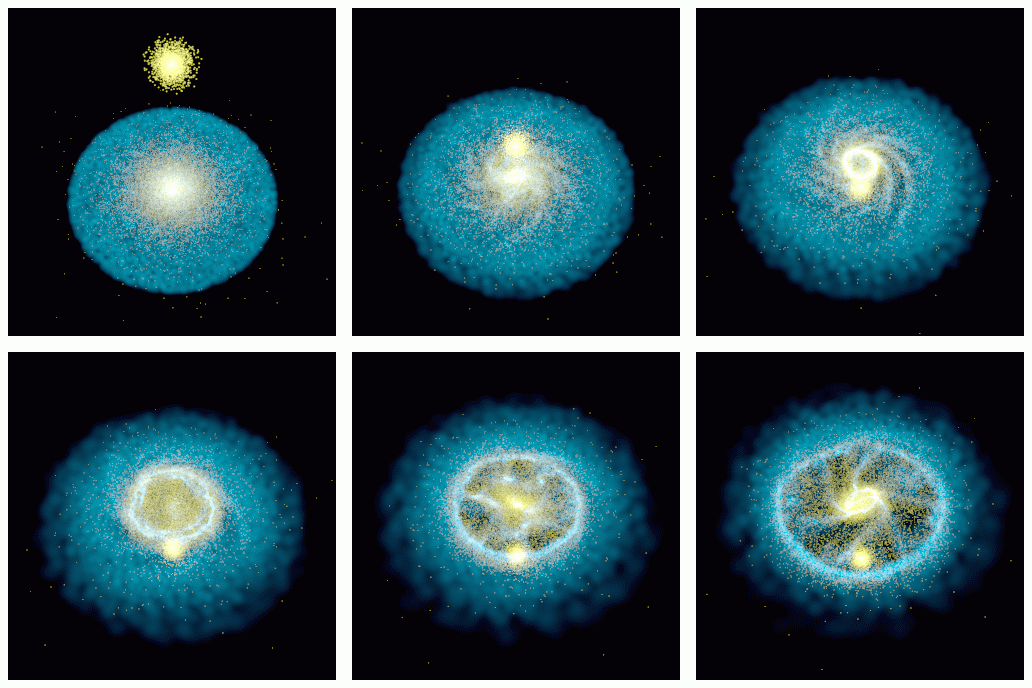
Available image formats: GIF, JPEG, TIFF

In this model, a smaller companion galaxy passes through a larger disk galaxy.Yellow/white shows the stars in the model, while blue shows the interstellar gas. The whole sequence covers approximately 350 million years.
Upper Left: The small galaxy falls towards the
disk, along the pole of the disk galaxy.
Upper Middle: The galaxies are seen just before
the collision.
Upper Right: After the small galaxy passes through
the disk, a ring forms in the disk's center, and moves outwards.
Lower Left: The ring sweeps up gas as it moves
outwards which framents into small dense lumps.
Lower Middle: The dense gaseous lumps fall back
towards the disk's center, forming radial spokes. Meanwhile the ring continues
to expand outwards.
Lower Right: The gas falling back into the center
of the galaxy forms an inner ring, while the outer ring continues expanding.
The companion can be seen behind the disk; it will eventually turn around
on its orbit and merge into the bigger galaxy.
Image Credit: Chris Mihos and Sean Maxwell, Case Western Reserve University
For comparison, here is the Hubble Space Telescope image of the Cartwheel Galaxy.